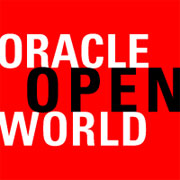
I hadn’t been aware of one of the more important CRM stories of the year until I was doing research for a new book. It’s a great story and it deserves retelling, especially if you’re like me and think that focusing on customers’ moments of truth is important. Thanks to Narina Sippy for pointing it out.
Back in April, Starbucks announced revenues for the just-completed quarter that exceeded year-over-year attainment by a whopping 17.8 percent.
Usually a break this big needs explaining, and often there’s a logical reason. Maybe it’s because one company bought another or it introduced a world-beating product or it opened a lot of new stores.
Starbucks did add 210 stores in the quarter under discussion, but 210 out of 22,088 is not likely to move the needle in the way reported.
Still, there was Starbucks announcing record revenues of $4.56 billion and the aforementioned 17.8 percent improvement. That’s just about unheard of for a retailer in the restaurant business.
The company also had 10.3 million loyalty members, up 10 percent from the previous quarter, according to the earnings results.
An average loyalty member spends three times as much as a nonmember, according to Starbucks.
Understanding the Customer
Most of the credit for the outsized (should we say grande?) increase came from technology, specifically a mobile app that enables loyalty members to get their orders faster and with less hassle.
The mobile app now lets loyalty members order and pay without standing in line; moreover, it serves as a marketing platform for people well disposed to upsells.
This is a big deal and not simply because it exemplifies the digital revolution taking place. Like any hype cycle, there will be impressive successes in the everything-goes-digital transformation of business, and there will be failures.
The difference, as is often the case, is in understanding the application of the new technology rather than implementing it just because you hear voices.
Starbucks didn’t decide simply to build a mobile app. Instead, it decided to understand customer moments of truth and then tried to figure out how to be there for its customers.
As it turns out, waiting in line at a busy coffee shop not once but twice — to place an order and then to wait for your order — is a major time sink for busy people. Why not skip the lines altogether and just head right to pickup?
That’s part of the mobile app’s appeal. Best of all, you can order on your way so that your stuff is waiting for you when you arrive, and yes, you’ve already paid for it — so be on your way.
Digital Transformation
Now, perhaps you are reading this and thinking well, of course, why not build a mobile app to do this? It seems intuitive, but if it really was there would be so many examples of companies engaging this way that my book would have written itself by now. That’s not the case.
The Starbucks example does, however, show what moments of truth and digital transformation are all about and how they can work synergistically.
The transformation really is about finding ways to reach customers proactively with something of value for their consideration that leads directly to capturing customer data so the vendor can know beforehand where the moments of truth are and then forecast which customers to prepare for, like eliminating lines.
Sequence of Events
The Starbucks example shows two things. First, it demonstrates the right sequence for the transformation, which amounts to listen to customers first, then act.
The availability of powerful technologies made a mobile app possible, but it didn’t do anything to change the moments of truth. Without WiFi and mobile and all the rest, customers would have had the same moments of truth, and eliminating the waiting still would have been an important thing to tackle.
Previously, solving such a problem meant putting more people on duty or buying more machines to crank up output, but that was capital intensive. If no other vendor was competing on reducing wait time, those investments might have proved to be wasteful or without acceptable return on investment.
Changing Channels
The second thing I learned from this example is that the mobile app is effectively a new channel, newer even than social networking running on your phone.
As a channel, the mobile app needs to be filled. It needs content but not just any content. The nature of this channel is highly personal, so the content needs to be also. This channel needs to be able to predict customer needs well enough that the customer will always think a suggestion is valid even if that customer rejects it.
So that’s it in a small space. Digital transformation is about getting tighter with customers; it is not primarily about saving a few parts of a penny on a transaction.
The transaction is already basically free — the customer buys the device and airtime and supplies the labor of the interaction. The responsibility or duty for vendors now is to be relevant.

























































